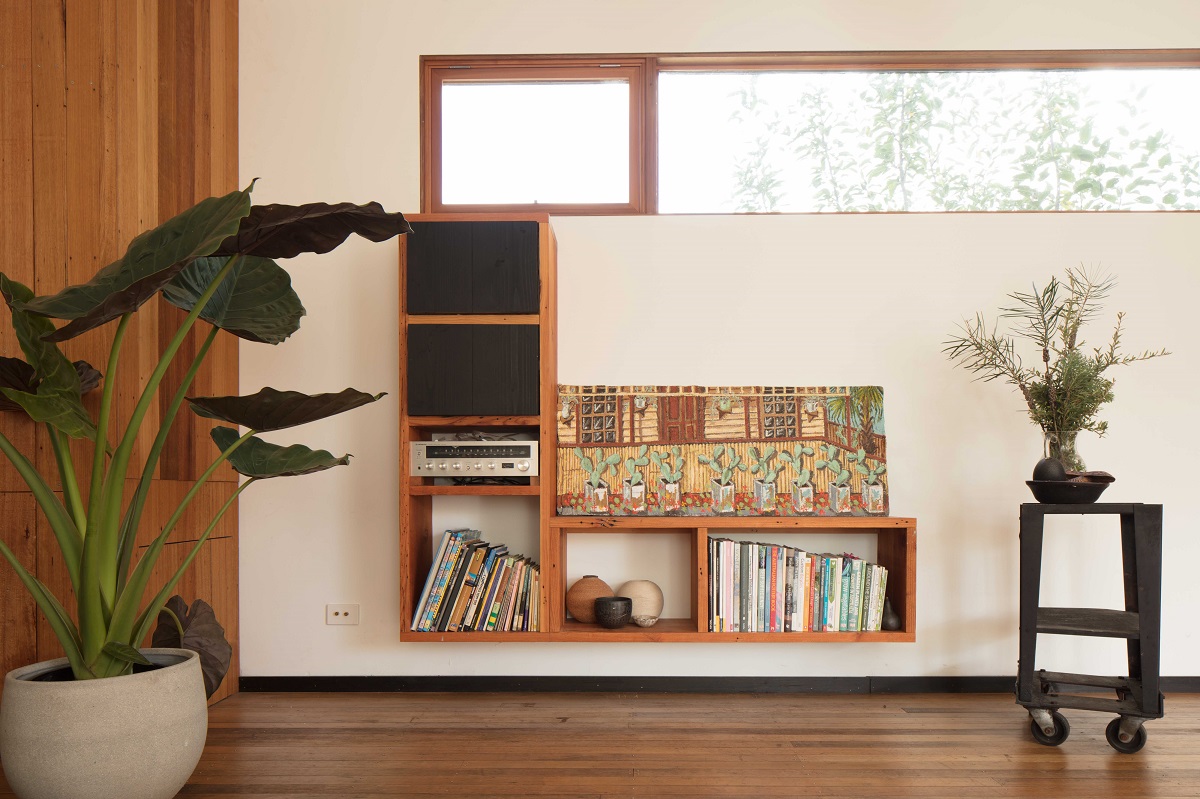 What is Sustainable Decorating?
What is Sustainable Decorating?
With a bit of thought and research, you can decorate your home with a sustainable, eco friendly approach, while filling it with your personal style. A beautiful home should consider the environment, embrace those who live in it, and improve your happiness, health and wellbeing.
There is no one style to sustainable decorating. The idea is not to create a particular look, but one that suits your style, while ensuring a lighter footprint on the planet and a healthier home.
It's important to reuse and rearrange the things you already have at home first, and build on this. You can use vintage, secondhand and upcycled pieces and sustainably designed and sourced new products, ones that utilise renewable resources, consider fair trade and ethical practices, and reduce your carbon footprint.
Choosing a new piece of furniture that has been produced in a sustainable way, or from recycled materials, alongside upcycled and vintage pieces, is the perfect way to go. Even adding one statement piece that may be upcycled, such as a gorgeous workbench as a feature kitchen island for example, can add so much character.
At the end of the day sustainable decorating is about being kind to both people and planet. It's about choosing products that use minimal resources, items that last, or that can be reused, to make sure we leave the world in a healthy state and create less waste.
This approach also connects us as human beings. Using or upcycling a piece of furniture that has a history, gives you a sense of connectedness that's often lost in this big busy world. It opens up opportunities for you to be creative and take a personal hand in the decorating of your home.

sustainable house day 2018 The Recyclable House
Sustainable Design
Sustainable design (also called environmental design, environmentally sustainable design, environmentally conscious design, etc.) is the philosophy of designing physical objects, the built environment, and services to comply with the principles of social, economic, and ecological sustainability (Wikipedia). The intention of sustainable design is to make sure there are no negative impacts on the environment by using skillful, sensitive design. This means using renewable resources, impacting on the environment minimally, and connecting people with the natural environment.
You can make a sustainable home through considering the architecture and interior design. This includes things like working with the position your block faces for passive heating and cooling, thinking about water use and how to capture natural light. Use products and materials that are recycled and used in a unique way, or use a product that has no waste at all. Be mindful and take a slow decorating approach, so you can make the best choices.

bauwerk-colour-lime-wash-paint-colour-lab-blues-01 - eco friendly paint
Eco friendly
By understanding the true meaning of eco-friendly, you can implement the practices that result in healthier living for all of us.
Eco-friendly literally means earth-friendly or not harmful to the environment (dictionary.com). This usually means products that contribute to green living, or practices that help conserve resources like water and energy. Eco-friendly products also lessen contributions to air, water and land pollution.

Dining table crafted from reclaimed hardwood timber, with feature rusted steel legs.
Renewable Resource
A renewable resource is any natural resource (such as wood or solar energy) that can be replenished naturally with the passage of time. (WordNet Search). So it can be used, but it can be replaced over time. This is particularly so for things like timbers. For example, timbers such as pine and Australian hardwood are replanted in monitored forests, whereas timber from rainforests is not replanted and lost forever.

Duncan Meerding Stump Lamp
 Upcycled
Upcycled
Upcycling is taking an item that is no longer needed or wanted and giving it new life as something that is either useful or creative. There are many fantastic ideas and communities involved in the upcycling movement in particular upcycling things like doors, windows and pallets, but there is no limit to what can be upcycled!

tansley and co vintage country kitchen design
Vintage
Vintage is pretty easy! By choosing pieces from op shops, secondhand stores and other places where you can select items that already exist, you are reducing your impact on the world and often saving some cash! You will find better quality items made in the past and pieces with character and history. Going on a treasure hunt at a local fair, garage sale or op shop, can be exciting and fun.
Carbon Footprint
This is a complex one, but basically means the amount of carbon dioxide or other carbon compounds, emitted into the atmosphere by the activities of an individual, company, country, etc (Dictionary.com) Your carbon footprint relates to how much ‘energy’ is needed to produce something you use. One way to reduce this is by buying locally where you can, or at least buying products that are sourced locally. All these items can be looked at individually, to see if they are sourced or made locally. The closer you are to the manufacturer of all the processes involved in making a piece of furniture or homewares, the less time and energy is spent on fuel, meaning less impact on the environment.
Steps to take
Research before you buy, there's so much you can find with a bit of googling!
- Buy local and sustainable, where possible.
- Consider buying Fair Trade.
- Consider the source when you make a purchase.
- Consider buying pre-owned goods.
- Consider the packaging of the item.
- Consider the eventual disposal or reuse of the item.
Always be thinking about where something has come from, how it has been made and what you will do with it when you no longer want or need it.
Follow the R's of sustainable living - Refuse (anything you do not really need, packaging, single use plastics), reduce (your reliance on things, reduce what waste you create), reuse (pretty simple!), recycle (also simple :)) and rot (compost your food and garden waste) are the steps to live a more sustainable life.

Think of yourself like a tree trying to shade a home. As one tree, you can make some definite impact and at certain times of the day, you will cast a strong patch of shade across the roof of the house. But if you had a group of trees next to you, dotted around the property, you would create a forest, and this would bring far more shade, oxygen and comfort to everything that lives on the block.
On an even wider scale than that, you would contribute to the health of our planet. Together, your little forest of trees would improve the environment of the home and the lives of the people who live in it, as well as the wider world.
These changes in the ways we live are ultimately contributing to reducing the damage to our planet and improving the quality of all of our lives.
The future looks bright when we all look forward together. If you would like advice on sustainable decorating at your place, head here for more information about my online sustainable decorating services.
Helen xx

 Upcycled
Upcycled
